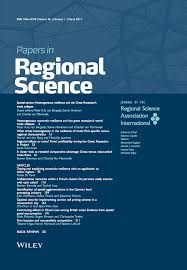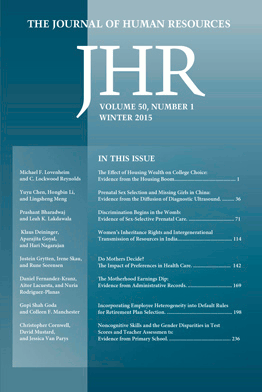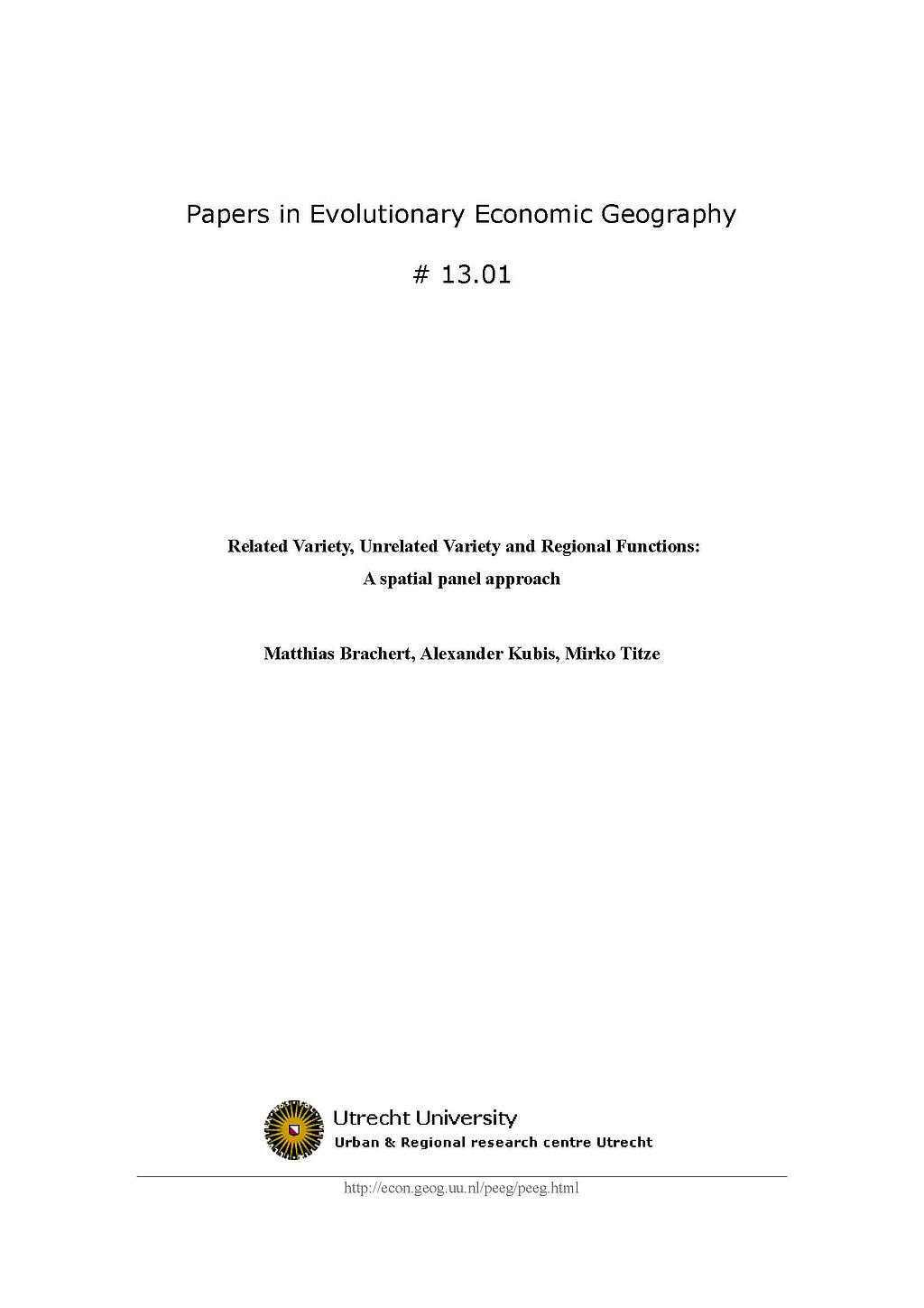Evaluation of Subsidy Programmes
This research group focuses on two main research questions: (i) What is the causal effect of cooperative innovation activities on the performance of firms and regions? (ii) What are the causal effects of public Research and Development (R&D) support schemes on the performance of firms and regions? The first research question concerns the dynamics of firms and regions as a result of their different innovation activities. We apply a micro-based integrative perspective on innovative activities which allows identifying causal effects of cooperative activities on specific outcomes (e. g., patent applications, scientific publications, employment growth, or productivity growth). Concerning the second research question, recent studies mainly focus on the evaluation of one specific subsidy scheme. Research in this group aims to overcome this shortcoming by considering various support schemes. Indicators for the firms’ success are (amongst others) patent applications and employment growth. The results allow insights for the future design of innovation support schemes.
Centre for Evidence-based Policy Advice (IWH-CEP)
Research Cluster
Economic Dynamics and StabilityYour contact

Mitglied - Department Präsidialbereich
EXTERNAL FUNDING
09.2019 ‐ 09.2022
Establishing Evidence-based Evaluation Methods for Subsidy Programmes in Germany (EVA-KULT)
European Regional Development Fund (ERDF)
The project aims at expanding the Centre for Evidence-based Policy Advice at the Halle Institute for Economic Research (IWH-CEP).
01.2018 ‐ 12.2020
Networked growth - Innovative Saxony-Anhalt through digital business models (Competence Center 4.0)
Federal Ministry for Economic Affairs and Energy (BMWI)
01.2017 ‐ 12.2018
Political Participation in Eastern Germany
Federal Ministry for Economic Affairs and Energy (BMWI)
12.2015 ‐ 11.2018
Socio-economic Effects of Research on Innovative Approaches for POC Diagnostics
Federal Ministry of Education and Research (BMBF)
Part of the EXASENS project. Coordinated by the Leibniz Institute of Photonic Technology (IPHT) in Jena, nine Leibniz institutes are working together on researching point-of-care (POC) technology for the prediction and diagnosis of chronic inflammatory respiratory diseases. See press release.
02.2017 ‐ 02.2018
The Importance of Non-University Research Institutions for the Development of Firms and Regions (Be_For_Reg-Projekt)
Federal Ministry of Education and Research (BMBF)
01.2015 ‐ 12.2016
Evaluation of the "Joint Task 'Improving the Regional Economic Structure'" in the Federal State of Saxony-Anhalt
Investitionsbank Sachsen-Anhalt
Refereed Publications

Identifying Industrial Clusters from a Multidimensional Perspective: Methodical Aspects with an Application to Germany
in: Papers in Regional Science, No. 2, 2011
Abstract
If regional development agencies assume the cluster concept to be an adequate framework to promote regional growth and competitiveness, it is necessary to identify industrial clusters in a comprehensive manner. Previous studies used a diversity of methods to identify the predominant concentrations of economic activity in one industrial sector in a region. This paper is based on a multidimensional approach developed by Titze et al. With the help of the combination of concentration measures and input–output methods they were able to identify horizontal and vertical dimensions of industrial clusters. This paper aims to refine this approach by using a superior measure of spatial concentration and by integrating information about spatial interdependence of industrial cluster structures to contribute to a more adequate framework for industrial cluster identification.

Die Identifikation horizontaler und vertikaler industrieller Clusterstrukturen in Deutschland – Ein neues Verfahren und erste empirische Ergebnisse
in: Raumforschung und Raumordnung, No. 5, /6 2009
Abstract
. If regional development agencies assume the cluster concept to be an adequate framework to promote regional growth and competitiveness, it is necessary to identify industrial clusters in a comprehensive manner. Previous studies used a diversity of methods starting with specific regional case studies, input-output methods and different concentration measures. This article presents a new instrument in empirical cluster research – the Qualitative Input-Output Analysis –, which offers the possibility to identify industrial cluster in conjunction with concentration measures. Especially, this method allows the combination of an identified critical mass of regional firms with the necessity of interaction of these firms within an input-output framework. Applying this method to Germany’s “Arbeitsmarktregionen” we find that 103 “Arbeitsmarkregionen“ show first signs of horizontal industrial clusters, while only 28 regions are able to attract vertical industrial clusters. 139 “Arbeitsmarktregionen” did not show signs of industrial clusters according to the research design.

Investitionszuschüsse nur bei Schaffung von Arbeitsplätzen? Schlussfolgerungen aus der Förderung eines Investitionsprojektes über die Gemeinschaftsaufgabe im Land Brandenburg
in: Zeitschrift für Wirtschaftspolitik, 2009
Abstract
The Joint Task “For the Improvement of the Regional Economic Structure“ is one of the most important Instruments of the German regional policy. This instrument is applied in regions with strong structural problems and aims to reduce unemployment. The instruments institutional framework demands the creation of additional permanent posts. This paper explores that these requirements can provoke inefficient combinations of production factors. The reasons for that problem can be seen in market failures as well as political disappointments. The government of each federal state has an incentive to demand permanent posts as much as possible because public revenue can equal the government expenditures after a relative short time period due to employment and production effects. The institutional framework of the German financial equalization scheme between the federal states contributes to that problem too - the expenditures for subsidization can be balanced by perequations paid by the other federal states.

A Professor Like Me: The Influence of Instructor Gender on College Achievement
in: Journal of Human Resources, No. 2, 2009
Abstract
Many wonder whether teacher gender plays an important role in higher education by influencing student achievement and subject interest. The data used in this paper help identify average effects from male and female college students assigned to male or female teachers. We find instructor gender plays only a minor role in determining college student achievement. Nevertheless, the small effects provide evidence that gender role models matter to some college students. A same-sex instructor increases average grade performance by at most 5 percent of its standard deviation and decreases the likelihood of dropping a class by 1.2 percentage points.

Soll die Höhe von Investitionszuschüssen an die Einführung von Umweltmanagementsystemen gekoppelt werden?
in: List Forum für Wirtschafts- und Finanzpolitik, No. 1, 2009
Abstract
Economic policy has to reconcile a very complex set of objectives. Often, there is a trade-off between these policy targets. This paper focuses on objectives related to the improvement of the regional economic structure and the environmental protection. In Germany, regional policy is pursued among other things using investment grants within the Joint Task framework. At the federal state level, the Länder select and support sustainable investment projects. Some federal states have changed their investment support framework and aim for additional political targets such as environmental protection. Politicians in the Free State of Saxony discuss the option to offer an addition to the basic investment grant. This applies to plants that operate a certified environmental management system. Related to this current political debate this paper describes the effects of such regulatory measures. The article shows that under a particular set of circumstances the envisaged regulation actually could lower the overall level of supported investment and therefore would not stimulate the introduction of environmental management systems. Hence both political objectives would not be fully reconciled. The alternative way could be a direct support of environmental management systems as already introduced in selected other Länder.
Working Papers

Do Manufacturing Firms Benefit from Services FDI? – Evidence from Six New EU Member States
in: IWH Discussion Papers, No. 5, 2015
Abstract
This paper focuses on the effect of foreign presence in the services sector on the productivity growth of downstream customers in the manufacturing sector in six EU new member countries in the course of their accession to the European Union. For this purpose, the analysis combines firm-level information, data on economic structures and annual national input-output tables. The findings suggest that services FDI may enhance productivity of manufacturing firms in Central and Eastern European (CEE) countries through vertical forward spillovers, and thereby contribute to their competitiveness. The consideration of firm characteristics shows that the magnitude of spillover effects depends on size, ownership structure, and initial productivity level of downstream firms as well as on the diverging technological intensity across sector on the supply and demand side. The results suggest that services FDI foster productivity of domestic rather than foreign controlled firms in the host economy. For the period between 2003 and 2008, the findings suggest that the increasing share of services provided by foreign affiliates enhanced the productivity growth of domestic firms in manufacturing by 0.16%. Furthermore, the firms’ absorptive capability and the size reduce the spillover effect of services FDI on the productivity of manufacturing firms. A sectoral distinction shows that firms at the end of the value chain experience a larger productivity growth through services FDI, whereas the aggregate positive effect seems to be driven by FDI in energy supply. This does not hold for science-based industries, which are spurred by foreign presence in knowledge-intensive business services.

Isolation and Innovation – Two Contradictory Concepts? Explorative Findings from the German Laser Industry
in: IWH Discussion Papers, No. 1, 2015
Abstract
We apply a network perspective and study the emergence of core-periphery (CP) structures in innovation networks to shed some light on the relationship between isolation and innovation. It has been frequently argued that a firm’s location in a densely interconnected network area improves its ability to access information and absorb technological knowledge. This, in turn, enables a firm to generate new products and services at a higher rate compared to less integrated competitors. However, the importance of peripheral positions for innovation processes is still a widely neglected issue in literature. Isolation may provide unique conditions that induce innovations which otherwise may never have been invented. Such innovations have the potential to lay the ground for a firm’s pathway towards the network core, where the industry’s established technological knowledge is assumed to be located. The aim of our paper is twofold. Firstly, we propose a new CP indicator and apply it to analyze the emergence of CP patterns in the German laser industry. We employ publicly funded Research and Development (R&D) cooperation project data over a period of more than two decades. Secondly, we explore the paths on which firms move from isolated positions towards the core (and vice versa). Our exploratory results open up a number of new research questions at the intersection between geography, economics and network research.

Does Proximity Matter in the Choice of Partners in Collaborative R&D Projects? – An Empirical Analysis of Granted Projects in Germany
in: IWH Discussion Papers, No. 12, 2014
Abstract
This paper contributes to the discussion on the importance of physical distance in the emergence of cross-region collaborative Research and Development (R&D) interactions. The proximity theory, and its extensions, is used as a theoretical framework. A spatial interaction model for count data was implemented for the empirical analysis of German data from the period from 2005 to 2010. The results show that all tested proximity measurements (geographical, cognitive, social and institutional proximity) have a significant positive influence on collaboration intensity. The proximity paradox, however, cannot be confirmed for geographical, social and institutional proximity, but for cognitive proximity.

Is Subsidizing Companies in Difficulties an Optimal Policy? An Empirical Study on the Effectiveness of State Aid in the European Union
in: IWH Discussion Papers, No. 9, 2014
Abstract
Even though state aid in order to rescue or restructure ailing companies is regularly granted by European governments, it is often controversially discussed. The aims for rescuing companies are manifold and vary from social, industrial and even political considerations. Well-known examples are Austrian Airlines (Austria) or MG Rover (Great Britain). Yet, this study aims to answer the question whether state aid is used effectively and whether the initial aim why aid has been paid has been reached, i.e. the survival of the company. By using data on rescued companies in the EU and applying a survival analysis, this paper investigates the survival rates of these companies up to 15 years after the aid has been paid. In addition, the results are compared to the survival rates of non-rescued companies which have also been in difficulties. The results suggest that despite the financial support, business failure is often only post-poned; best survival rates have firms with long-term restructuring, enterprises in Eastern Europe, smaller firms and mature companies. However, non-funded companies have an even higher ratio to go bankrupt.

Related Variety, Unrelated Variety and Regional Functions: A spatial panel approach
in: Papers in Evolutionary Economic Geography, 2013
Abstract
The paper presents estimates for the impact of related variety, unrelated variety and the functions a region performs in the production process on regional employment growth in Germany. We argue that regions benefit from the existence of related activities that facilitate economic development. Thereby the sole reliance of the related and unrelated variety concept on standard industrial classifications (SIC) remains debatable. We offer estimations for establishing that conceptual progress can be made when the focus of analysis goes beyond solely considering industries. We develop an industry-function based approach of related and unrelated variety and test our hypothesis by the help of spatial panel approach. Our findings suggest that related variety as same as unrelated variety facilitate regional employment growth in Germany. However, the drivers behind these effects do differ. While the positive effect of related variety is driven by high degrees of relatedness in the regional “R&D” and “White-Collar”-functions, the effects of unrelated variety are spurred by “Blue Collar”-functions in this period.














